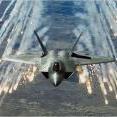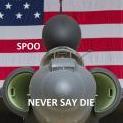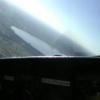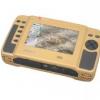Leaderboard
Popular Content
Showing content with the highest reputation on 01/26/2017 in all areas
-
You may be right, but I'd question how well our policy of supporting democracy and freedom around the world has really gone so far. We ended up in Korea to a stalemate, and we're still there. We pulled out of Vietnam with our tail between our legs. Iraq hasn't exactly blossomed into a stable democracy after three tries at it. Afghanistan is still as corrupt and ungovernable as ever. Libya had a dictator willing to give up his WMDs and work with the US to repair ties...a few tweets later, we're bombing his administration, giving Iran a close look at why they should NOT abandon their own nuclear weapon research. Egypt was a strong ally of the US for years, but again, a few tweets, some action-packed protest video, and we pushed their leadership under the bus in favor of an overtly hostile political group. There have not been many times where our direct intervention has actually helped. So maybe, just maybe, instead of responding to every crisis in the world with a "we can fix this, we're a super-power", we should weigh our options and think hard about what we're going to get out of our involvement first.7 points
-
The EU nations in NATO are taking advantage of our generosity, and have been for years. They aren't Haiti, or some other natural disaster-ravaged nation. Granted, many of the Americans who are OK with Europe having a pathetic military wish that we would follow suit, but as long as we are paying for them, we should expect a contribution proportional to their economic size.3 points
-
T-38s = F-16s ... Just a guess. Sent from my iPhone using Baseops Network Forums3 points
-
SNL could learn a lot from the Netherlands. They make fun of Trump without sounding like a bunch of butthurt little children, unlike our media.1 point
-
1 point
-
Your numbers on your application have little (to absolutely zero) sway over what you'll end up flying. Your performance in UPT determines where you rack and stack among your classmates and decides how much preference you have over your assignment. Overall, it's the needs of the Air Force, timing and luck.1 point
-
1 point
-
1 point
-
The Economist used to be balanced. It most definitely is not anymore.1 point
-
Good on them for trying to own it. Hope the gains continue and administration ownership of the economy continues regardless of the outcome. FYI the DJIA under Obama: +148.2% That's an average of a 0.35625% gain per week over the course of 416 weeks in Obama's 8 years in the seat. President Trump is above that average so far closing in on Week 1 in office (+0.78% and counting), and honestly, good luck to him. I would like to see those overall economic gains delivered to mainstreet as well as wall street (i.e. job growth, wage growth, etc.). https://www.marketwatch.com/story/the-dows-biggest-surge-came-under-this-president-2017-01-23 Not that any President really has much control over the stock market, but if you're gonna bear the blame might as well take the credit too right?1 point
-
Brookings is always a good source: https://www.brookings.edu/blog/order-from-chaos/2017/01/23/seven-trump-foreign-policy-assumptions/1 point
-
A legend went west yesterday, Godspeed Mike. Hail Dragons. Article Link Dragon Lady Down Mike Hua’s airplane was leaving a silvery streak of vaporized jet fuel in its wake, as its tanks slowly drained through a fractured fuel line. The thin trail was barely visible in the starlight of a summer night; only a chase plane could have seen it. Hua had no idea his gas was bleeding away. But on August 3, 1959, the only chase plane in the world that could have paced him would have been another Lockheed U-2, since that’s what Hua was flying at 70,000 feet over Utah. Mike Hua was actually Major Hsichun Hua, an experienced F-86 Sabre pilot of the Republic of China Air Force, based on the island of Taiwan. He had been sent to Laughlin Air Force Base, in Texas, as one of a select group of Nationalist Chinese pilots appointed to train on the then super-secret spy plane so they could overfly mainland China. All of them had been arbitrarily given Western handles—Pete, Jack, Charlie, Sonny, Spike, Terry, Mickey, Mike—by their U.S. Air Force instructors. Hua, today a retired ROCAF general living in Maryland with an aeronautical engineering doctorate from Purdue, has retained Mike as part of his name ever since. That night in 1959, however, he was 34 years old and on just his seventh U-2 training flight. His assignment was to fly from Laughlin to overhead Big Spring, Texas; then northwest to his turnaround point at Ogden, Utah; southwest to Delta, Utah; and finally southeast for the long, lonely slog home. Hua wasn’t flying from VOR to VOR as any private pilot of the time could have done with his simple Narco VHF radio, and of course there was no such thing as GPS. He was navigating with the U-2A’s built-in sextant, taking star sights like a 19th-century mariner, albeit through a hooded cockpit scope. He was doing this while wearing a pressure suit and helmet, in a cockpit the size of a 1952 VW Bug driver’s seat, at night, in an airplane that required remarkably precise speed control. Five knots too fast meant Mach overspeed and possible failure of the fragile airframe, and 5 knots too slow meant a stall upset and equally destructive airframe failure. All of Hua’s U-2 flights had been solos, since no two-seaters existed as yet. To have survived this far was a sign of substantial Chinese aviation talent, for the “Dragon Lady” was the hardest-to-land airplane in the Air Force’s inventory, and perhaps the hardest-to-land aircraft in living memory. (Those who have piloted restored and replicated Gee Bee racers might disagree.) But Hua had landed solo six times, and his seventh U-2 touchdown was about to go down in aviation history. The spy planes were usually landed with the help of an experienced U-2 pilot stationed at the approach end of the runway, like an aircraft carrier’s LSO, to tell the pilot how many feet above the ground he was. Assuming the pilot had at least nailed the over-the-fence airspeed, every extra foot of altitude meant 1,000 more feet of runway would be needed. Eventually—and to this day—U-2s began to be landed with the help of “mobiles.” These are U-2 pilots driving muscle cars that can easily accelerate to 100 mph from a taxiway to catch up with a landing U-2 so the driver can call out precise altitudes, even in inches, to the pilot. Mike Hua had no mobile. In fact he didn’t have a friend in the world when his Pratt & Whitney J57 went silent 13 miles above Utah. U-2As had no fuel-quantity gauges—assumedly a weight-saving measure. A low-fuel warning light was supposed to come on when just 40 gallons remained, but Hua doesn’t remember seeing it. Since a glowing red instrument panel warning light would be impossible to ignore at night, apparently it had failed. It was 2258 local time when the big Pratt checked out and left Hua with nothing but the sound of the slipstream. Actually, Hua did have one friend: his long-winged Lockheed jet sailplane. From 70,000 feet, a U-2 could glide 250 nautical miles to sea level—make that 200 nm in Hua’s case, since he would ultimately land at 5,900 above sea level. For every 23 feet it traveled, an engine-out U-2 sank just one foot, a glide ratio identical to that of the ubiquitous Schweitzer 2-33 two-seat sailplane. Not far behind Hua was Hill Air Force Base, at Ogden. Crystal-clear hindsight 55 years later suggests that Hua could easily have turned around and glided to its 13,000-foot runway, where the U-2 would quickly be dragged into a hangar, its secrets intact. But below him was an unbroken undercast with tops at 40,000 feet, and Hua had watched the cloud buildup gradually obscure all ground lights during his leg from Texas to the Ogden turnaround point. Shooting an unfamiliar, dead-stick, single-pilot instrument approach into Hill would not have been fun. There was a better reason why Hua confidently held his southeast heading toward home. “We were told during ground school that the engine was not stable at high altitudes and would occasionally flame out,” he noted in a recent e-mail. “It could easily be relit below 35,000 feet, though. Before the first training flight, we were told to shut down the engine at altitude and to glide down to 35,000 feet to practice an air start, which we did. That night, I was frankly overconfident that the engine was having one of these ‘normal’ flameouts, so I maintained my course. When my air-start attempts failed, I was too low to reach any major field.” Below 35,000 feet, there was enough oxygen to support a relight, but Hua had no way of knowing his tanks were dry, and nothing in the world would restart his engine. As he entered the undercast, Hua called Hill AFB to try to get a steer away from the mountains that he knew were hidden below him. No answer. He transmitted a mayday on the guard frequency that was supposedly monitored by the military. Still no answer. Was there nobody flying late at night over Utah? Possible. Did nobody understand Hua’s Chinese-accented English? Maybe. Life was getting complicated. He’d lost the autopilot when the engine failed and the generator went offline, and a U-2A was a full-time job to fly manually at altitude. Hua’s pressure suit had also automatically inflated, which left him in solid clouds and turbulence trying to read a chart, working radios and hand-flying the airplane while blown up like the Michelin Man. The pilot’s classic mantra “aviate, navigate, communicate” may sound simple, but not when each step requires his full attention. Once Hua reached combustion-sustaining air at 35,000 feet, he tried three engine relights. He even got out the emergency procedures checklist to make sure he was doing it right, but of course he was trying to relight air, not jet fuel. Now he was down to 17,000 feet. His continued involuntary descent in the clouds must have seemed a butt-clenching eternity, but at 7,000 feet above sea level the U-2 broke into the clear and Hua could see how lucky he’d been. He was flying southeast in a dark valley, with mountains to each side, their tops still in the clouds. Hua was actually just 1,000 feet or so above the ground, perhaps less. At his 11 o’clock, he saw the lights of civilization, which turned out to be the small city of Cortez, Colo. And Cortez had a municipal airport. Luck continued to ride with Hua. He spotted the airport’s rotating beacon several miles southwest of town, and then the runway lights. The Cortez city council had recently decided that leaving the runway lights on at night was an unnecessary expense for a cash-strapped town. But as midnight neared, an inbound Frontier Airlines flight was running late. So on this night of all nights, the lights had been left on. Hua glided across Cortez Runway 21 from west to east, then made a broad 270-degree turn to the left and gently rolled out on a long final to the 7,200-foot runway. (Don’t be fooled by that seemingly ample length. Cortez Municipal is at 5,900 feet above sea level, and at that density altitude on a warm August night, the runway was probably equivalent to a sea-level strip roughly half that length. It was also only 10 feet wider on each side than the U-2A’s 80-foot wingspan.) In a remarkable demonstration of precision approach-speed control under extreme pressure, Hua put his big U-2A down, if not on the numbers, certainly close enough for government work, as the classic and appropriate expression has it. The extreme challenge in landing an early U-2 was created by a combination of high-aspect-ratio wings fat with low-speed lift, particularly in ground effect, and a lack of effective lift-dumping devices. Sailplanes with U-2-like wings have powerful spoilers that are as effective as a throttle: Pop the spoilers and the glider decelerates like a Cessna with its throttle pulled to idle. Retract the spoilers and the glider reacts as though you had added power. The only way to bring a U-2 to earth, however, was to bleed away every ounce of lift short of a stall while at the same time avoiding a stall, since dropping a U-2 onto a runway from 2 or 3 feet could terminally damage its fragile airframe. Try to land a U-2 in a level attitude on the main gear—to “wheel it on” with its wings still anxious to fly—and the spy plane would bounce back into the air and float the length of the longest runway the Air Force owned. Touch tailwheel first just as the airplane loosed its grasp on the air and a U-2 would call it a day. Major Hua got it exactly right that night. To his surprise, the U-2’s landing gear collapsed during rollout because the airplane had lost its hydraulic pump after the engine failure, so the gear extended but lacked the hydraulic pressure to engage the downlocks. “I felt like I had made a nice landing, but then the belly scratched the runway,” Hua wrote. This put the wingtips close enough to the runway that a ground loop was inevitable. The left wing touched, and the big Lockheed spun out like an old Porsche 911, ending up facing backward in the sagebrush alongside the runway. “I so lucky. I so lucky,” a bystander recalls Hua muttering after the landing. But luck be damned, the Cortez incident was a textbook example of how to handle a nighttime, IFR, single-engine, in-flight engine failure calmly and skillfully. Give that man a medal, the Air Force said, and awarded Hua the Distinguished Flying Cross. From the Denver Post: After receiving a Distinguished Flying Cross from the U.S. Air Force for his feat, Hua went on to become a four-star general in the Republic of China Air Force. He earned a master’s degree and doctorate in aeronautical engineering at Purdue University and was in charge of Taiwan’s aerospace program. Now living in Maryland, he has written or been a source for several articles about the landing. Hua also wrote a book, “Lost Black Cats: The Story of Two Captured U-2 Pilots”, about two of his comrades who were captured in mainland China after their spy planes went down.1 point
-
1 point
-
1 point
-
1 point
-
I can tell you (at least roughly) how it's going to play out for the MAF year group(s)--like the one that's currently graduating--which get shorted for bodies, in favor of the CAF: - They'll all start their flying careers being really busy, flying a bunch and getting sq jobs folks in prior year groups would never have gotten so early - Way too early in their careers, the bright and shiny types will be identified, and will quickly join the protected class which rarely flies or deploys/is set up for the string of jobs/assignments that will make them really promotable. The next tier down--the ones not on the leadership track, but who are competent/dependable--will get crushed with all the important, yet non-sexy (read hardship) deployments & home station jobs. The middle of the packers--good flyers, but not great leaders/staff types--will fly their arses off and also get crushed with deployments. Those (at least according to AF perceptions) who are at the bottom of the pack will likely enjoy a level of job security that in prior years they never would have had. That is, until such time that they get RIFd--because, of course, the AF needs to retain its critically manned 11Fs (even though in this year group the 11Fs will be overmanned relative to 11Ms/others). - About 10 years from now, the bright and shinies (the ones who bother to stay on AD) will be in IDE & will already be largely disconnected from ground truths in the mobility community. The second-tier & middle of the road guys--if the civil sector is hiring--will get out in droves. The bottom of the pack folks will likely stay in. - 20 years from now, the bright and shinies will still be bright and shiny, and more importantly will have had careers that in no way reflect the experiences of the masses. The second-tier and middle of the road folks will all be retired, or--at best--will still be on AD, but enjoying cush jobs (the only kinds of jobs that could entice them to stay in). The bottom dwellers who survived being passed over/RIFs/etc. will still be on AD, too. They'll be the middle managers. The O-6 and above MAF leaders will have some really awesome ideas, after having spent so much time in schools/as execs/on staffs. Problem is, their middle managers--the passed-over O-4 and O-5 types--will almost exclusively be the middle of the roaders and bottom dwellers of yesteryear. Those executing the missions will almost exclusively be folks with less than 10 years rated service--i.e., folks who haven't yet had the opportunity to punch. In sum, we'll have a whole bunch of good idea generators, but lack adequate numbers of competent people to put those ideas (whether good--or more likely good-sounding but questionable) into action. Funny. This situation I describe twenty years from now kinda sounds like where the MAF is today: out of touch O-6 and above types, a razor-thin slice of competent O4s and O-5s trying to keep the ship afloat, and a bunch of junior dudes who are 1) eyeing life outside of AD, and 2) unimpressed by the AF clownshow. Problem is, ten years ago, we had the "good fortune" of 9/11, the Great Recession, and FAA rule changes to encourage folks to remain on AD. Consequently, we were able to retain at least a degree of talent. Barring another catastrophe, I don't see the Air Force future as being quite so rosy for the current crop of recent MAF SUPT graduates. The MAF will be even more broken, but at least there'll be enough CAF bubbas to fill the AF's senior leadership roles, going forward. So we'll have that going for us. TT1 point
-
Balanced? What does that mean? Equal space for facts and "alternate facts"?0 points
-
Just wait until you have to explain 15 billion times to everyone you meet not from NY what SUNY Cortland is. (SUNY Potsdam myself)0 points
-
-1 points
-
The Atlantic has some excellent in depth reporting. It does tend to lean left at times, but what gets reported is usually spot on. They most definitely plan to hold this administration's feet to the fire. The Economist is usually also balanced, good reading. For newspapers, I like the Wash. Post, and before I get flamed, I like the WSJ for a conservative counterpoint.-1 points











